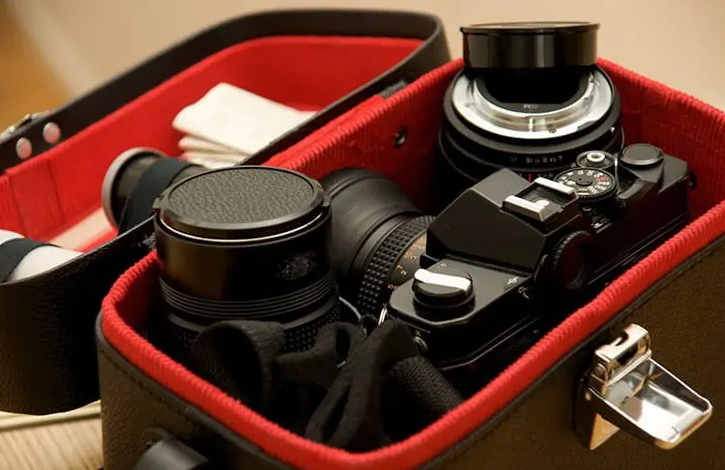The main disadvantages of hard-shell suitcases are their heavier weight, often between 8 to 12 pounds for a 25-inch suitcase, and lack of packing flexibility.
Table of Contents
The Evolution of Hard-Shell Suitcases
History and Advancements
The tale of hard-shell suitcases starts with the introduction of the first modern suitcase in the early 20th century. Prior to this, most people traveled with bulky trunks or soft leather bags. The concept of a hard-shell suitcase took off when materials like polycarbonate and aluminum became more readily available and affordable. Manufacturers soon realized these materials not only provided durability but also added an extra layer of security compared to soft-sided bags.
In the 1980s and ’90s, advancements in technology enabled features like integrated locks, telescopic handles, and spinner wheels. Brands like Samsonite and Rimowa have since led the way in the innovation of hard-shell suitcases, introducing smart luggage capabilities such as GPS tracking and USB charging ports.

Popularity and Modern-Day Uses
The hard-shell suitcase has become a staple for modern travelers for several reasons. One of the most prominent factors is its aesthetic appeal; these cases often come in a range of colors and designs that attract consumers. Additionally, the hard-shell design is often considered more professional and has thus become a popular choice among business travelers.
The rise of budget airlines has also played a role in the popularity of hard-shell luggage. These carriers often have strict baggage policies, and the durability of hard-shell cases offers some assurance against damage during transit.
Key Disadvantages of Hard-Shell Suitcases
Weight Concerns
One of the most pressing drawbacks of hard-shell suitcases is the weight factor. Even when empty, a hard-shell suitcase can weigh considerably more than its soft-shell counterparts. This can be particularly troublesome when you’re dealing with airline weight restrictions. Exceeding weight limits often leads to additional fees, and budget travelers find this especially concerning. Budget airlines are notorious for their strict weight limitations, and using a hard-shell suitcase can push you uncomfortably close to these limits before you even start packing.
Lack of Flexibility
Another significant disadvantage is the lack of flexibility. Hard-shell suitcases have a rigid structure, which means you can’t over-pack them or squeeze in that one last item like you could with a soft-shell bag. This rigidity can be a hassle when you’re shopping on your trip or when you need to pack irregularly shaped items. The design of the suitcase leaves little room for adaptability, affecting its utility for various travel needs, from business trips to adventure getaways.
Cost Implications
The materials and technology used in hard-shell suitcases often drive up the price, making them more expensive than soft-shell alternatives. Brands like Tumi and Rimowa offer high-end hard-shell options that can be quite pricey. This can be a considerable disadvantage for travelers on a budget or those who don’t travel frequently enough to justify the higher cost. Even among mid-range options, you’ll find that hard-shell suitcases usually cost more than their soft-shell equivalents for comparable sizes and features.
Comparative Analysis
Hard-Shell vs Soft-Shell Suitcases
When choosing between hard-shell and soft-shell suitcases, several factors come into play, each with its own set of advantages and disadvantages. Here’s a table that summarizes some key points:
| Feature | Hard-Shell Suitcases | Soft-Shell Suitcases |
|---|---|---|
| Weight | Generally heavier, especially with materials like aluminum. Ranges from 8 to 12 pounds for a 25-inch suitcase. | Lighter, often around 5 to 8 pounds for a 25-inch suitcase. |
| Flexibility | Rigid structure. Limited to the initial size. | More flexible. Allows for extra packing and stretching. |
| Cost | Typically more expensive. Mid-range options start at $150. | Generally cheaper. Mid-range options can start at $100. |
| Durability | Polycarbonate or aluminum shells are sturdy but can scratch or dent. | Less prone to cosmetic damage but susceptible to tears. |
| Security | Often comes with integrated locks. | Locking options usually need to be added. |
Given these differences, the choice between a hard-shell and a soft-shell suitcase often depends on your specific travel needs.
Specific Scenarios Where Disadvantages Are Amplified
- Budget Airlines: If you’re a frequent traveler on budget airlines with strict weight limits, a hard-shell suitcase can be a disadvantage due to its heavier weight.
- Shopping Trips: For those who like to shop during their travels, a hard-shell suitcase’s inflexibility can be an issue. You won’t be able to stretch the bag to fit in that extra pair of shoes or souvenirs.
- Outdoor Adventures: If you’re into camping or trekking, the rigid structure of a hard-shell suitcase is impractical. A soft-shell duffel bag would offer more versatility.
- Public Transport: Navigating through crowded subways or buses is easier with a soft-shell suitcase, which can adapt its shape to tight spaces, unlike its hard-shell counterpart.
- Frequent Business Travel: If you are a business traveler who frequently goes on short trips, the added weight and lack of flexibility in a hard-shell suitcase can be more of a hindrance than a help.
Consumer Testimonials
Real-world Experiences
Travelers who have used hard-shell suitcases often report a love-hate relationship with them. On one hand, people commend the durability and the sense of security these suitcases offer. A frequent flyer mentioned how her Rimowa suitcase survived multiple international flights without a single dent, emphasizing how the hard shell protected her fragile items effectively. Adventure travelers have also reported positive experiences, stating that hard-shell cases kept their gear dry and secure in extreme conditions.
On the flip side, many have complained about the difficulties they’ve encountered due to the weight and rigidity of the suitcase. One traveler recalled an instance where she had to pay extra fees on a Ryanair flight because her hard-shell suitcase was just a pound over the weight limit—even before she packed her belongings. Another shared how a short business trip turned stressful because the rigid structure of his hard-shell suitcase wouldn’t allow for the easy addition of last-minute items.
Common Complaints
Some recurring themes in consumer complaints include:
- Weight: A majority of customers express concerns about the weight, citing instances of paying additional baggage fees or facing inconvenience while on the move.
- Limited Flexibility: Travelers often express frustration over not being able to squeeze in last-minute items. One customer recounted a story of being unable to pack a souvenir he bought, despite having sufficient space in a soft-shell bag on a previous trip.
- Cost: Many find the higher initial cost unjustified, especially if they don’t travel frequently. One traveler pointed out that her less expensive soft-shell suitcase from Samsonite has lasted just as long as her friend’s high-end hard-shell suitcase but at half the cost.
- Scratches and Dents: Though hard-shell suitcases are durable, they are not immune to cosmetic damage. Several customers have reported their suitcases coming off the baggage carousel with noticeable scratches or dents.
- Lack of External Pockets: This may not be a deal-breaker for everyone, but some travelers miss the convenience of having external pockets for quick access to essentials like passports or water bottles.
Practical Implications
Impact on Travel Experience
The choice of luggage can significantly affect your travel experience. If you’re going for hard-shell suitcases, you need to be prepared for the extra weight. While this may not be a major issue when you’re checking into a luxury hotel with a bellboy, it can be a real challenge if you’re hopping between trains in Europe or taking a budget airline with stringent weight limits.
Additionally, the lack of flexibility in hard-shell suitcases can be problematic when you have irregularly shaped or last-minute items to pack. For instance, if you’re returning from a wine tour in France, a hard-shell suitcase might not be the best choice for transporting wine bottles, given its rigid structure. Likewise, if you’re on a business trip and have to include presentation materials or prototypes at the last moment, a hard-shell case won’t give you that flexibility.

Suggestions for Different Types of Travelers
- For Budget Travelers: If you’re traveling on a budget, especially with airlines that have tight baggage restrictions, opt for lightweight soft-shell luggage. They are generally cheaper, lighter, and allow some flexibility in packing.
- For Business Travelers: If your business trips are short and involve flying on premium airlines without strict weight restrictions, a sleek, professional-looking hard-shell suitcase could be a good choice. Brands like Tumi offer sophisticated options that include laptop compartments and other business-friendly features.
- For Adventure Travelers: If you’re going camping or hiking, a hard-shell case is not your best bet. Instead, look for specialized bags made for outdoor activities that can handle wear and tear while offering more packing flexibility.
- For Luxury Travel: If you’re not worried about cost and are more concerned with style and durability, then high-end hard-shell suitcases from brands like Rimowa or Louis Vuitton can be a suitable choice. These often come with advanced features like GPS tracking.
- For Family Trips: When traveling with family, it might be a good idea to mix and match. Parents can use hard-shell suitcases for fragile items and important documents, while soft-shell luggage could be more practical for kids’ belongings and extra purchases.






